
Intro
Most of our reviews are pretty long — and take a long time to produce — because we want to provide enough info for you to actually determine whether the gear we tested will work well for you.
But we get asked to check out an increasingly wide range of products, and sometimes, we just want to tell you about something we’ve been using and loving lately.
So that’s where this monthly series — Stuff We Like — comes in, where we keep you current on a broad range of stuff we’re currently digging.
And if there’s something you love that you think we ought to check out, drop us a note in the comment section below.
Peak Design Capture V3
MSRP: $75
David Golay: Peak Design has been making a bunch of really interesting camera gear and accessories for a while now, and I’ve become a huge, huge fan of the latest V3 iteration of their Capture camera clip.
In short, the Capture is a mounting bracket that clamps around a backpack strap, belt, or other similarly thin, flat thing; in turn, it offers a quick-release mounting point for your camera (or a variety of other items such as binoculars, via optional accessory mounts). The Capture uses an Arca-compatible tripod plate (Peak calls the default one the “Standard Plate” — more on that in a minute), which can clip into the Capture in any of its four possible orientations; the Capture bracket itself accepts the plate when slid in from the top (if mounted horizontally, such as on a backpack strap, or from the side if mounted vertically as on a belt). A button on the side of the Capture releases the plate, or can be turned 90 degrees to fully lock the Capture and prevent an accidental release.
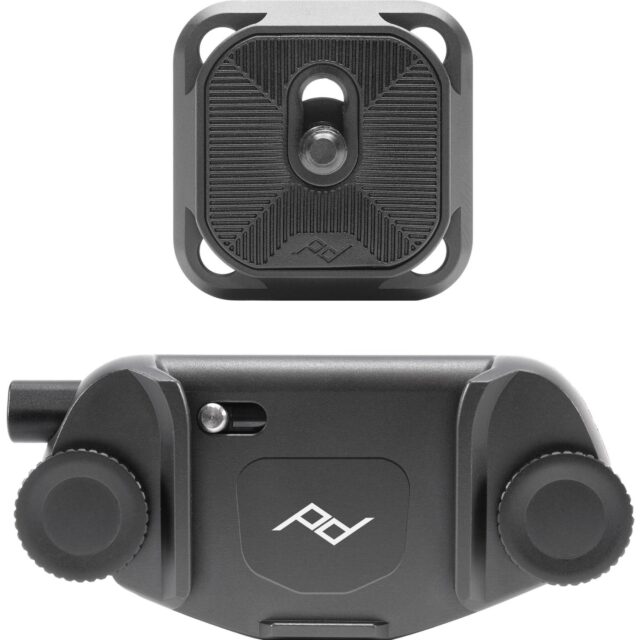
I’ve mostly used the Capture on a backpack strap with a full-frame mirrorless camera body (both a Nikon Z6 and a Z8) with a variety of lenses ranging from fairly small and light (e.g., a Nikon 14-30 F4 S) to quite big and heavy (most notably a Sigma 60-600 DG OS HSM, on a Nikon FTZ adapter). It’s been impressively comfortable and convenient across the board. Granted, “comfortable” is somewhat relative with a body + lens setup that’s just a few grams shy of 4 kg / about 8.8 lb. Peak says the Capture can hold over 90 kg / 200 lb, but it’s hard to imagine that you’d want to get anywhere close to that number.
But even with a pretty big, heavy setup on it, the Capture carries impressively well — and with a more moderate one, it’s excellent. It’s super quick and easy to stow and remove the camera; it’s held quite securely; and… that’s really what the Capture is meant to do. It works great.
That said, I did run into one (admittedly minor, and solvable) issue with the Capture: when paired with a Nikon Z6 body and an FTZ adapter to use older F-mount lenses, the Standard Plate sits behind the tripod mount on the FTZ adapter and blocks access to the Capture from above, if you have the Standard Plate mounted to the camera body itself. You can, of course, move the plate to the FTZ’s tripod mount to solve the issue, but that’s annoying if you’re using a combination of F-mount lenses with the adapter and Z-mount ones without it and thus need to move the plate back and forth.
Happily, Peak makes a “Dual Plate” that is designed to fit Manfrotto RC2 tripods (which are not compatible with the Standard Plate), and the Dual Plate also happens to be just taller enough than the standard one to clear the FTZ adapter while mounted directly to the Z6 body. The Standard Plate works fine with the FTZ on the larger Nikon Z8 body, but if you happen to be using a Z6 body with an FTZ adapter, the Dual Plate works better.
The only other drawback I’d note is that the Capture is designed to fit on straps up to 2.5’’ wide, which does leave some wider backpack straps out. But if it fits the straps of the backpacks you want to use it on, the Capture works extremely well. I’m a big fan.
Luke Koppa: I’ll chime in quickly as another fan of the Capture clips. I almost always have one on my camera pack while shooting ski photos and appreciate it for all the same reasons David noted. While I’ve gotten pretty confident skiing short-ish pitches with camera in hand, it’s nice to be able to more securely latch it onto my shoulder straps to free up my hands when the distance between shot setups is greater and/or consists of sketchier terrain.
I’ve skied plenty of steeps and big moguls with my setup (a smaller, micro-4/3 Olympus OM-D M-1) attached to the Capture clip and have never had it accidentally release. If you do so and have a strap on your camera body, I recommend tucking the camera strap under your pack’s shoulder straps to keep it from whacking you in the face and/or catching on your hands (speaking from experience…).
Mission Workshop Internal Tool Roll
MSRP: $28 – $38
Zack Henderson: Named for their home base in the Mission neighborhood in San Francisco, Mission Workshop makes some astonishingly expensive (and mostly made in the USA) bags and clothing for cycling and otherwise, but their humble Internal Tool Roll has proven to be a staple for my in-car workshop and any other travel with bikes.
Mission intends for the Internal Tool Roll to be tossed into their backpacks as an organizer (hence the “internal” descriptor), but the burly face fabric means it can be tossed just about anywhere. The organization is dead simple, with 2 larger zippered compartments and 2 smaller ones; a lengthy strap with a buckle holds everything together when rolled up.
I am admittedly a sucker for organization, but I also hate using fiddly multi-tools unless I’m on the trail with no other choice. The Internal Tool Roll easily holds everything I could realistically need with room to spare (spare tire plugs, quick links, sealant, full-size allen keys, shock pump, etc.), and it does so while being easy to roll up and hide away under my front seat.
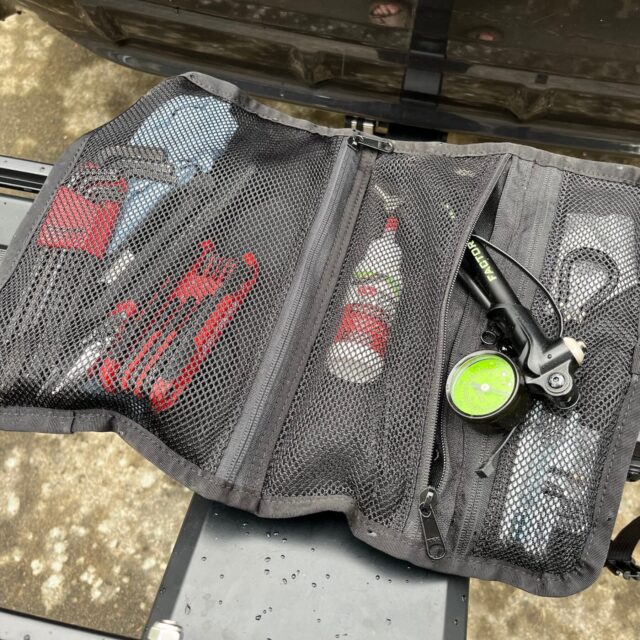
I bought the cheaper Cordura-faced option, whereas an extra $10 can get you fancier XPAC VX21 material with more colors. For something made in the USA and likely to last a lifetime, the Internal Tool Roll seems surprisingly well-priced, and would be a no-brainer re-purchase if mine ever needed replacement.
Roark Bless Up Dress
MSRP: $129
Kara Williard: I recently spent a week in Baja’s super hot, coastal desert, and the Roark Bless Up Dress was one of my favorite items I brought along on the trip. The Bless Up Dress is a midi, button-up dress made of a lightweight, breathable, and quick-drying material that’s perforated and extremely airy.
The style of the Bless Up Dress makes it an excellent option to throw over a swimsuit and wear as a cover-up for some sun protection, but since it falls a bit longer than your typical “mini” dress (even on my taller, 5’9” frame), and looks more like a dress than anything else, it’s a great, versatile piece that you can wear out to dinner or around town.
The Bless Up dress is also really packable – I was impressed by just how small I could roll it up to fit in my small carry-on bag, making it a no-brainer to bring on a trip I was packing light for. And, as an added bonus, it has some nice hand pockets with a minimalistic magnetic closure, so it’s easy to store your phone and wallet, or whatever else you need.

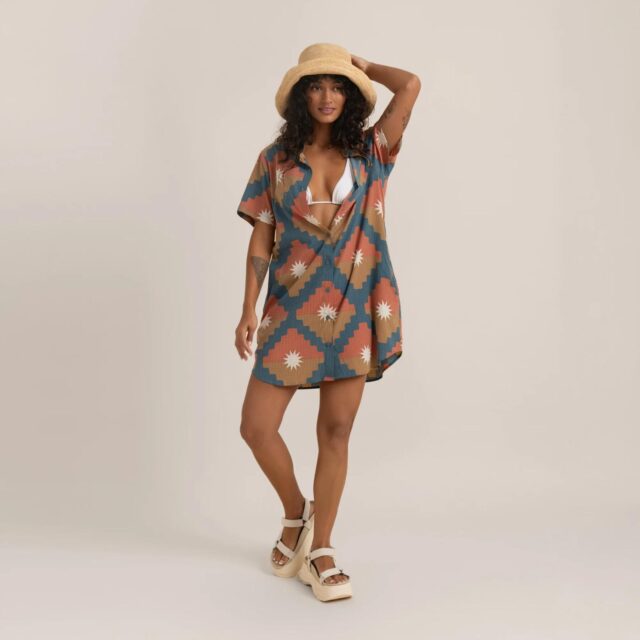
The light, breathable material was a huge benefit in the triple-digit temperatures in Baja, and I was able to rinse it and re-wear it multiple times during the week. This type of versatility and comfort is ideal when deciding which items to bring along on a trip with limited bag space, the the Bless Up Dress made a ton of sense for multiple occasions throughout the week.
Stio Eddy Shirt
MSRP: $129
Kristin Sinnott: I’ve been a big fan of Stio’s Eddy shirt. I’ve been wearing my Eddy shirt since 2019 and it has held up remarkably well; it still looks like new despite being exposed to a lot of sun and a lot of wear and tear. If you’re a frequent reader of Blister, you’ll know we aren’t big fans of brands redesigning products that don’t need to be updated. Thankfully, Stio hasn’t updated the Eddy Shirt – or if it did, it’s not noticeable.
My older shirt is a size Small and my new shirt is a size Medium. I like the fit of both, and I really don’t prefer one size over the other — I can opt for either, depending on what sort of look I’m going for. The soft, lightweight, UPF 50+, and mostly wrinkle-free fabric is comfortable to wear in a wide range of temperatures and drapes nicely. I often travel with the Eddy shirt since it stays comfortable and looks good in a variety of settings. From dinners in town to long days on the trail or river, the Eddy Shirt is an easy choice.
Stio also makes Kid’s and Men’s versions of the Eddy shirt — I bought one for my husband years ago and he still wears it regularly.


Tread Labs Orleans Sandal
MSRP: $100
Noah Eckhouse: When I’m working as a SCUBA Divemaster in the Caribbean, my day starts early: hauling tanks along the splintery dock and loading gear on the boat. Stepping down onto a heaving boat with 70 pounds of tanks in your hands means your footing better be good, and your footwear sturdy and supportive.
Whether you refer to them as sandals, flip-flops, or thongs, this sort of warm-weather shoe is an indispensable part of my summer wardrobe. A good pair will be comfortable, provide excellent orthotic support for my aging arches, and survive a lot of abuse in both wet and dry conditions. I’ve been wearing Tread Labs Orleans Sandals for 3 months now and have come to be quite fond of them.
Tread Labs is a company you may not know about, but probably should. Based outside Boston, founder Mark Piagen started Chaco Sandals in the late 90’s before selling the business, taking some time to sail the world, and then creating Tread Labs. The basis for everything they do is footbeds — from orthotic inserts (for plantar fasciitis, Morton’s neuroma, arch support, etc.) to sandals (slip-on, strap-on, nylon, and leather).
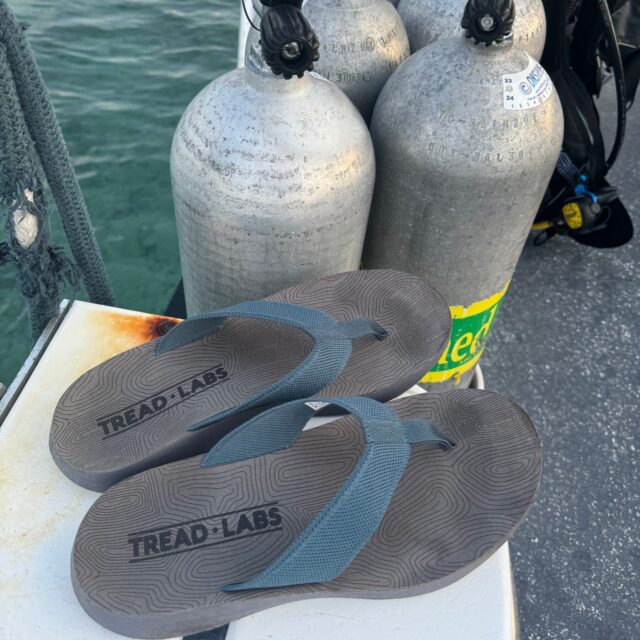
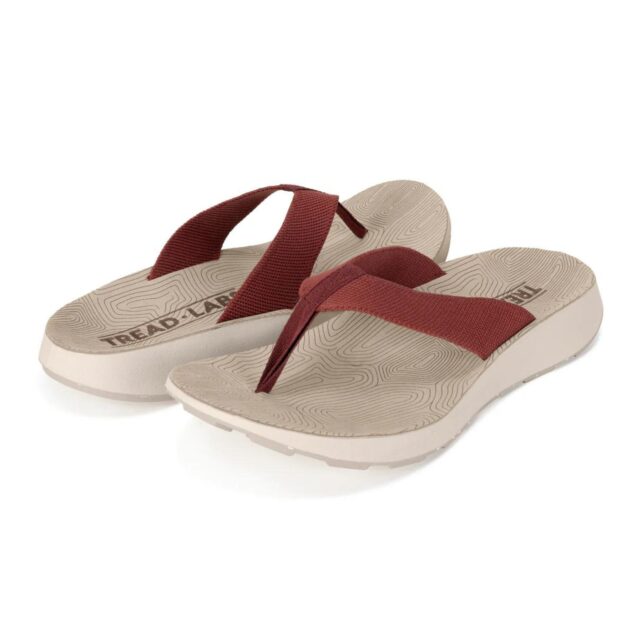
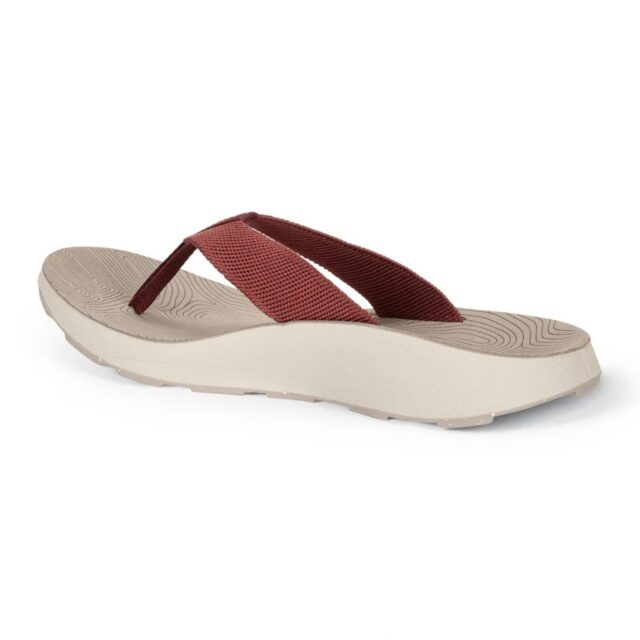
My experience is that most flip-flops deliver the same two outcomes: the foamy material compresses and wears quickly, creating lots of lingering summer foot pain while, simultaneously, the webbing rips out at an inopportune time and your shoe becomes worthless. Not these sandals, however. The durable rubber outsoles are mated to a polyurethane midsole and topped with a microfiber suede footbed. The “3D knitted upper” is molded without glue into the sole, creating a strong foundation that has so far held up well to my abuse, wet or dry. Note: I ordered up to a US Men’s size 12 from my normal shoe size of 11, because I like to have the extra toe/heel bumper.
The Orleans sandals look great, too! Their neutral gray and blue colors were great for dinner or some live Caribbean music. After a day working on the dive boat, I’d shower and put on a clean shirt paired with the Orleans sandals and my wife would inevitably eye me and say “you clean up real good.”
Bearbottom Roam Short
MSRP: $55
Luke Koppa: I don’t love hot weather. And after several years in Crested Butte’s mild summer climate, I’ve become an even bigger wimp as soon as the temps climb over even 70°F / 21°C. Consequently, my summer uniform is typically a pair of short shorts (I’m still Team-5” inseam) and a T-shirt. (Another reason I prefer cooler temps is that you have wayyy more options when putting together an outfit on a given day.)
Anyway, one pair of shorts I’ve been liking recently is Bearbottom’s Roam Short. I’d heard about Bearbottom before, but what actually drew me in was the fact that they place a priority on giving back to various charitable causes — currently, they donate one meal to a child in need for every item purchased. That quickly separated them in my mind from fast-fashion and Instagram-shop brands that are so prevalent today.
I’d classify the Roam Short as an athleisure piece, and while that’s definitely not my go-to style, in the black colorway I have, it doesn’t really come across as something that screams “from the gym to the boardroom” or some other overused marketing phrase.
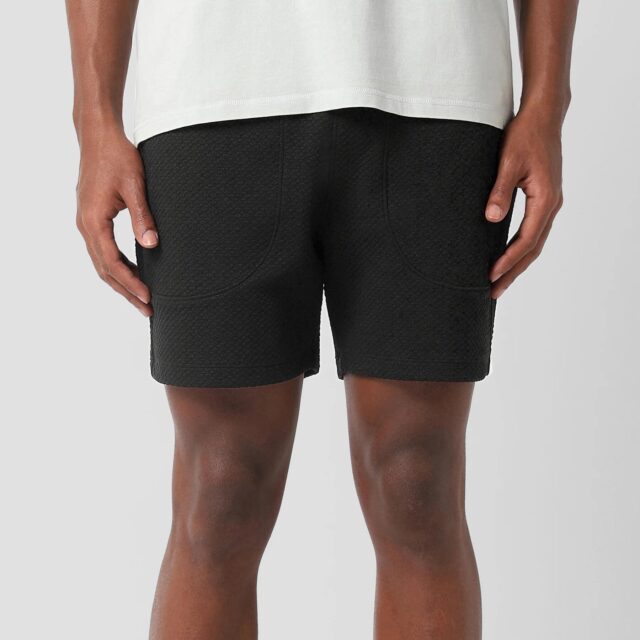
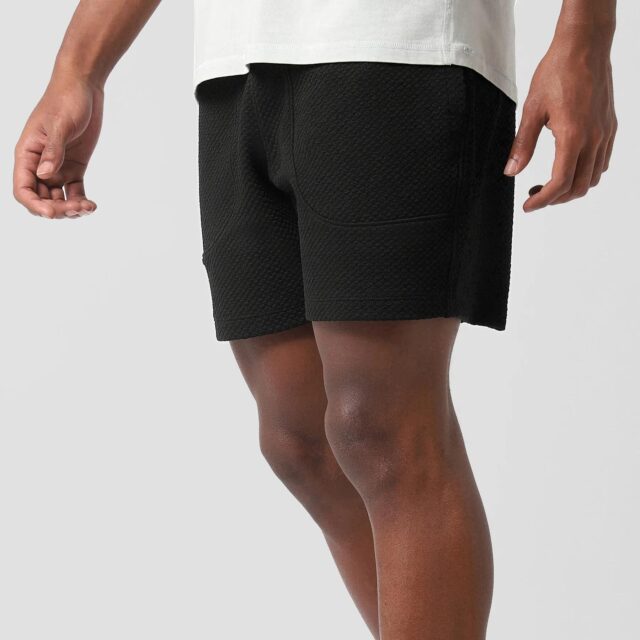
Rather, it’s just a pretty clean-looking pair of shorts, but one that’s made of a soft, stretchy cotton / polyester / spandex blend with a textured, micro-quilt-like knit. That texture is a nice touch, separating the Roam from any number of slick, microfiber running shorts. The fabric is on the thicker side of average, but I’ve found it quite breathable and easy to move in; if I wanted something to swim and/or sweat in a lot, I’d go for something with a thinner, fully synthetic weave (Bearbottom’s Trek Ripstop short seems like it could be good for that).
The fit of the Roam is fairly average for shorts these days, which means it’s a bit slimmer than I personally prefer (I’m more into straight-cut, wide-leg shorts), but it doesn’t dramatically taper from thigh to leg opening, which I appreciate. It’s available in 5.5” and 7” inseams, and comes with dual hand pockets (with nicely finished external seams) and a rear zippered pocket. Like most knit shorts, I don’t carry a lot of weight in the pockets since they’ll eventually sag / mess with the drape of the fabric, but they’re fine for my phone and small wallet.
Overall, the Roam Short is easy to recommend to those who want something versatile and comfortable in hot weather, but with a touch of refinement that’s often lacking in the athleisure segment.
I’ve also been using Bearbottom’s Corduroy Easy Short, which is worth a look if you want a more casual piece. Compared to the Roam, the Corduroy Easy Short comes across as notably more tapered from thigh to leg opening (I think that’s accentuated by the thick, stiff backer on the pocket-opening seams, which flare out a bit). But for those who prefer a more tapered short, it is pretty sharp and very comfortable.
Royal Robbins Men’s Amp Light Hoodie
MSRP: $80
Noah Eckhouse: In my life, hoodies come and hoodies go. Some are bulky and some are like big, airy tunics. The ones that stick around are typically made with technical fabrics, well fitted, work as a good layer when chilly, protect me from the sun, and don’t hold on to my sweaty funk when exercising.
The Royal Robbins Amp Light Hoodie is just such a piece. It is equally useful when spring skiing (hood up or down) as it is when used as a wind and sun block on a boat, or for providing a modicum of hooded privacy when on a long flight. It utilizes a recycled polyester / elastane fabric that’s Bluesign-approved and features HeiQ’s “Smart Temp” treatment, which reportedly aids thermoregulation.
The buttery soft fabric and slightly slim cut fit me perfectly in an XL. Its thumb holes keep my wrists insulated and worked effectively as half-gloves on a chilly spring day sailing Boston harbor. One thing I noticed about this fabric is it never seems to wrinkle, even when stuffed into a backpack for an afternoon.

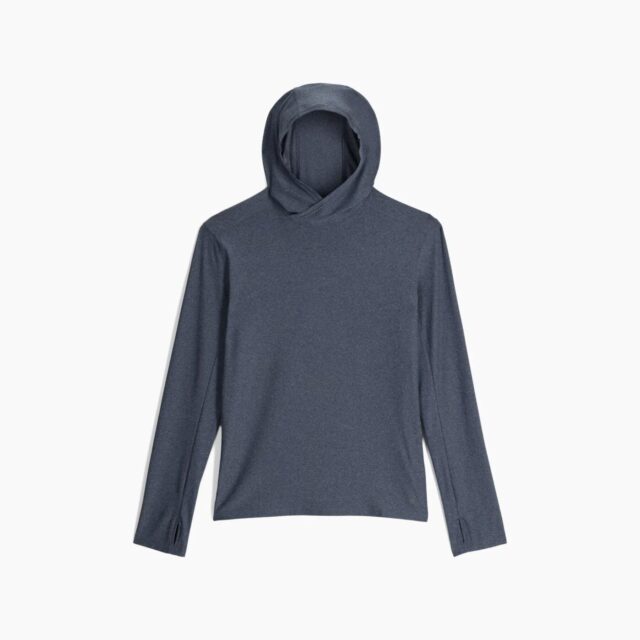
The fabric, the color hues (I have Navy Hunter), the neckline — and Royal Robbins’ wonderful restraint from over-branding the hoody with logos — make this hoody dress up nicely for a dinner out or post-hike coffee. This multifaceted performance top will remain at the top of my pile for many years to come.
Benchmade Intersect Drop-Point Knife
MSRP: $200
Noah Eckhouse: I took along the Benchmade Intersect drop-point knife with me on my trip to Grand Cayman last April and found it useful as an above-water knife. The headlines for this fixed-blade knife are its build quality and edge sharpness – both outstanding. Benchmade has long manufactured top-quality cutlery and has more recently moved into sports knives, particularly for water-related uses. Their CPM-Magnacut steel blade resisted salt water oxidation and held an edge beautifully.
I took the Intersect out on the dive boat, and when we had speared a few invasive Lionfish, we decided to clean the poisonous spiny fish with the knife. While obviously not a fillet knife, the Intersect did very well in the Finnish hands of our boat captain, Kalle. The knife was precise and very sharp, and even with wet hands on a moving boat deck, he had no problems removing the fillets for some tasty lionfish tacos.
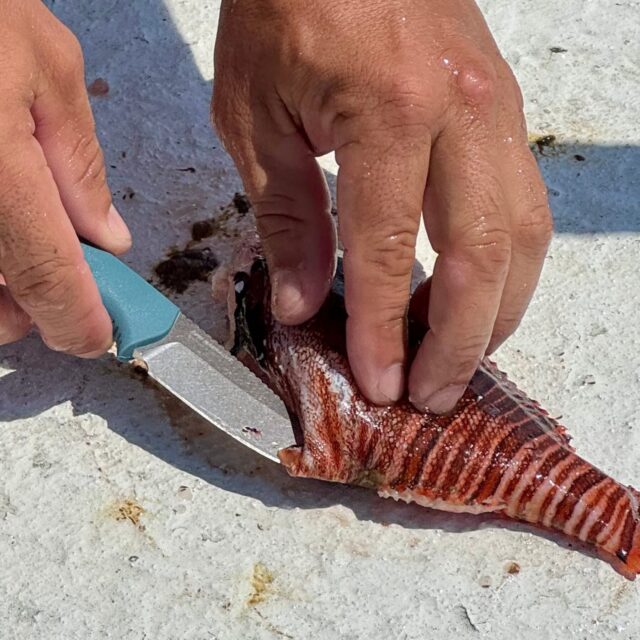
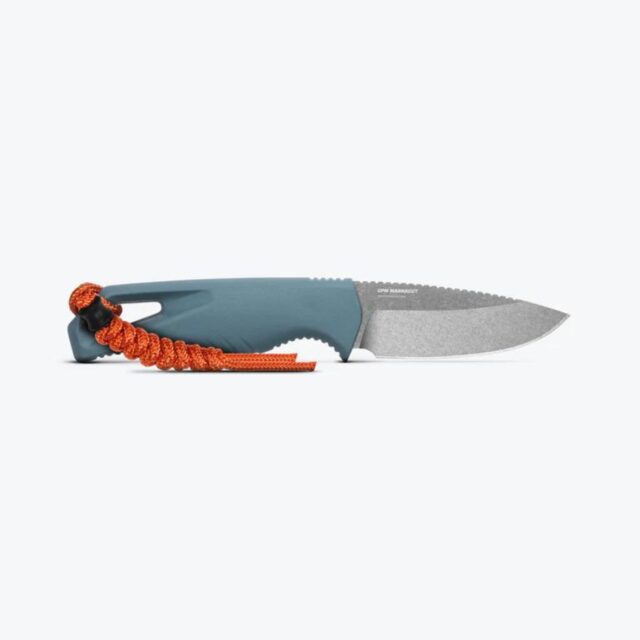
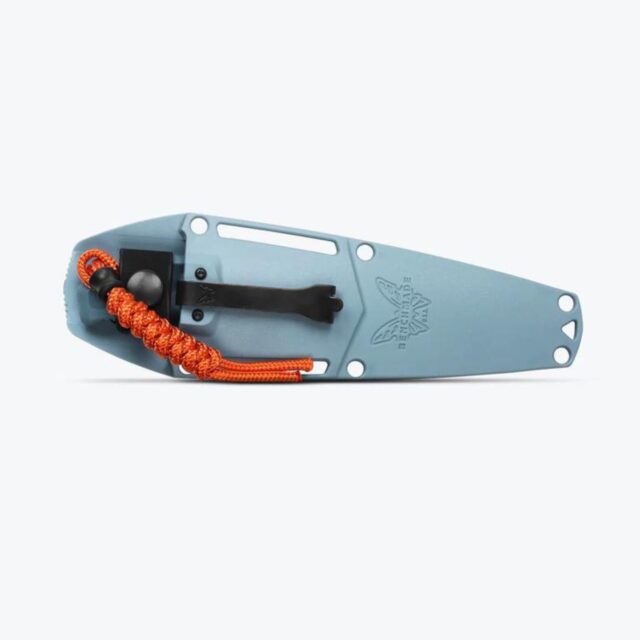
Overall, I found this chamois-style underwear to be super effective for shorter rides, and when I finish a ride, it also feels comfortable, giving a whole lot less of the “diaper” feel that bulky chamois can create, especially when you find yourself spending a lot of time in them.
I’d definitely recommend the Hipster Cham to any woman looking for a good solution for shorter rides, where a bit of padding can still go a long way, but a more minimalistic approach brings more comfort overall.
Detangler Hair Brush
MSRP: $10
Kristin Sinnott: A hairdresser once described my hair type as “the Irish curse.” I’ve had a lot of strange encounters with hairdressers, but that was a first for me. And I would say he aptly described my head of hair.
My hair is wavy underneath and straight on the top, surprisingly thick, and it tangles very easily. Especially leading up to the Blister Summit, when I barely had time to say hello to my family let alone comb my hair daily, I often found myself with a huge rat’s nest of knotted hair at the back of my head. If you saw me last January, I apologize for my appearance.
With my old hair brushes (including the wet brush that was useless on my hair) & detangler spray, going through my hair took a good 30 minutes of tortured, eye-watering brushing. Thankfully, I overheard my sister-in-law and cousin talking about a hairbrush that worked really well on their kids’ hair. So I searched for it online and found this one. There seem to be a lot of similar ones on Amazon, and as long as they are designed the same as the one I linked, they should work fine.

I have no idea who originally designed this brush (if you do – please let me know in the comment section), but for just about anyone with hair (Jonathan can ignore this one), you should buy one of these brushes! I use it on my son’s short hair and on my shoulder-length hair and I absolutely love it! It’s pain free. I no longer need to use detangling sprays. And my hair is now ridiculously easy to brush.
Shredly Hipster Cham
MSRP: $58
Kara Williard: I have gotten a bit tired of wearing chamois for rides, and in particular, bulky chamois on short rides. Over the past couple of months, I’ve found Shredly’s Hipster Cham to be the perfect solution. The Hipster Cham is pretty much a pair of hipster-style underwear with a lightweight chamois built in. At first glance, I was a little skeptical, but the fit was instantly comfortable, and it has proven to be just the right amount of padding for 1-2 hour rides. It’s especially nice that the underwear stays in place, and it eliminates so much unnecessary bulk, so it’s extremely comfortable for hot days and when I don’t expect to be in the saddle for more than 2 hours.
I’ve been wearing a size Large (for reference, I’m 5’9”, 170 lbs / 175 cm, 77 kg), and it has fit close to perfectly — it’s snug enough not to shift around but still super comfortable and doesn’t dig in or feel too tight anywhere. The Hipster Cham feels pretty average as far as Shredly’s sizing goes.
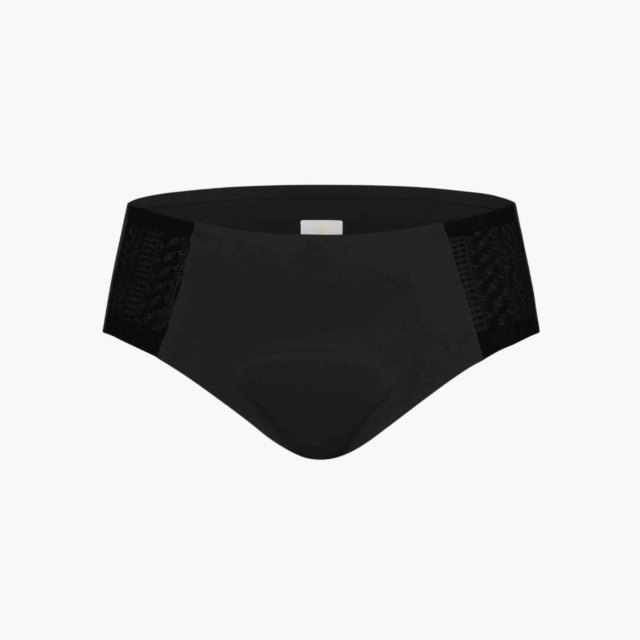


Overall, I found this chamois-style underwear to be super effective for shorter rides, and when I finish a ride, it also feels comfortable, giving a whole lot less of the “diaper” feel that bulky chamois can create, especially when you find yourself spending a lot of time in them.
I’d definitely recommend the Hipster Cham to any woman looking for a good solution for shorter rides, where a bit of padding can still go a long way, but a more minimalistic approach brings more comfort overall.
Sole Jasper Chukka
MSRP: $170
David Golay: Sole is best known for their extensive lineup of footbeds, but they’ve entered the footwear market with the Jasper Chukka, an extremely comfortable casual shoe with some very interesting design details.
Minimizing the carbon footprint of the Jasper Chukka was a major point of emphasis for Sole, and they’ve used an unusual combination of materials to get there. The midsole is made primarily out of recycled cork; the upper is made from a blend of merino wool and recycled PET with a bison hair / recycled polyester fill for light insulation; the outsole is made from 60% natural and 40% synthetic rubber; and the insole is made from partially recycled EVA with a cork top sheet. Sole says that the carbon footprint of the Jasper Chukka is vastly lower than that of most footwear, and publishes a detailed sustainability report for the shoes on their website.

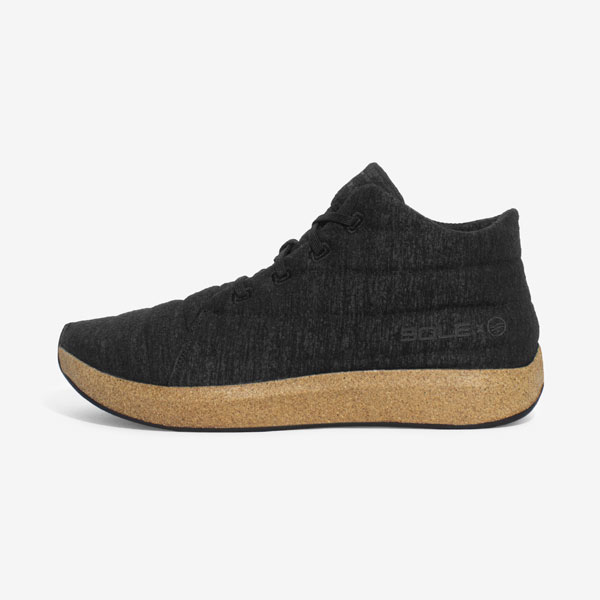

I’ve been wearing the Jasper Chukka in my usual US men’s size 10 size, which fits me nicely. They’re definitely more of a roomy, comfortable fit than a super snug, high-performance one — which makes sense, given the intended use of the Jasper Chukka. I wouldn’t be quick to run or go for a serious hike in them, partially because of the fit and because the upper is pretty stretchy and not especially supportive if you’re walking on uneven surfaces. But they’re incredibly comfortable for more casual around-town use.
Their cushioning is excellent, and the upper is very soft and pliable while being both moderately warm and very breathable. With the stretchy (60% polyester / 40% elastane) laces that come installed, they’re easy to slip on and off without retying. (A separate set of more conventional, less-stretchy laces are also included if you’d prefer to use those.)
The Jasper Chukka is definitely more casual / less technical than most of the footwear we review around here, but I’m a very big fan — again, first and foremost, for just how comfortable they are. Their water resistance is, unsurprisingly, pretty low, but their breathability is much better for it, and I’ve been happy wearing the Jasper Chukkas with mid-weight socks in temperatures ranging from near-freezing to well into the 70°s F (roughly 23° C). I imagine my use will taper off once temperatures regularly get much warmer than that, but I’ve been wearing the Jasper Chukkas a ton over the latter part of this winter and through the spring, and they might be the most comfortable shoes I own.
Sea to Summit Hydraulic Packing Cube
MSRP: $30-55
Jed Doane: Sea to Summit has long been a leader in outdoor organization and stuff-sacks, and these burly packing cubes are my most recent favorite. They’re as easy to open and close as normal packing cubes and quite lightweight, but with a burlier, water-resistant design. They’ve served a number of purposes for me, including isolating sopping-wet gloves and clothes on travel days during a recent extended snowboard trip. I use them as a general laundry bag while traveling, and for tightly compressing clean clothes on a weekend trip. I’ve also used the smaller versions as first aid kits in my hiking and touring pack.
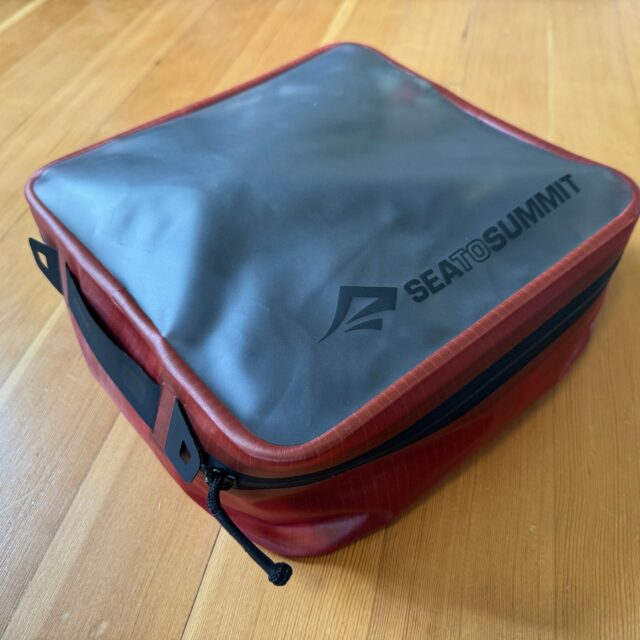

The peak design camera mount is a great product! There are a couple of things to watch out for that I learned the hard way when ski touring with it though:
* Your camera will get rattled around a fair bit while skiing; consider getting a lens cap with a leash, to prevent yours from flying away
* If you’re touring in cold weather, your camera won’t have much insulation while it’s attached to the mount, which can cause the battery to drain pretty quick. I’ve switched to mostly keeping mine in a case in my backpack while I’m skinning, and putting it on the mount on my backpack strap when I am ready to get action shots on the descent
Stio Eddy shirts (long-sleeved) are fantastic for skiing, other outdoor activities, and travel. They have snaps, not buttons, which is convenient and makes them long-lasting. I purchased my first one seven years ago (it still looks like new) and have since acquired two more (Men’s size Medium; me: 41-inch chest, 5′-7″ tall).